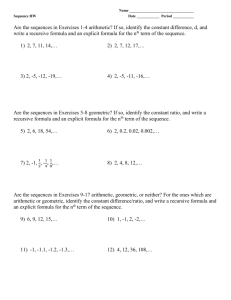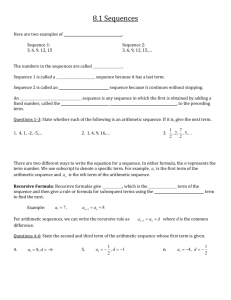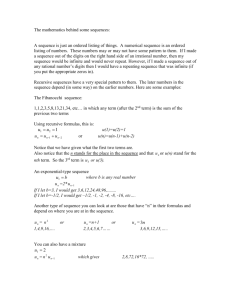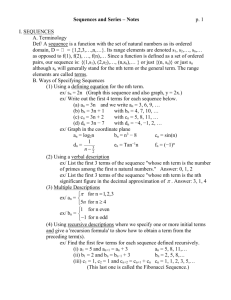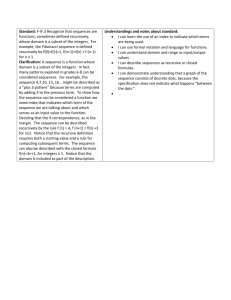Sequences - 9 4 day 1 SK
advertisement
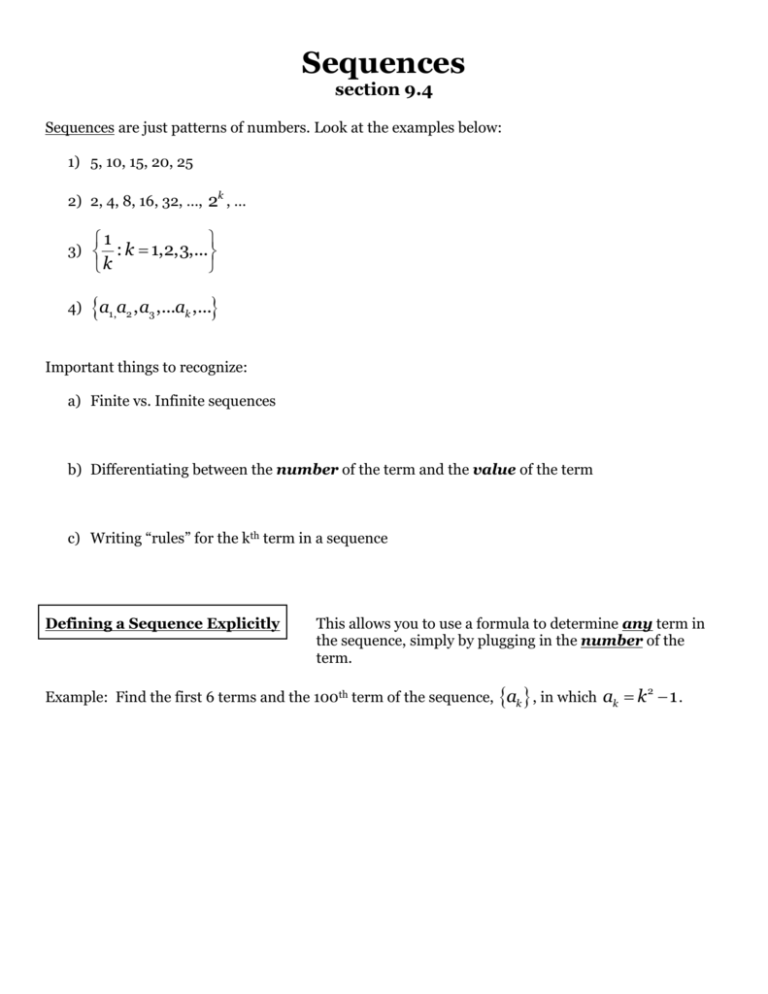
Sequences section 9.4 Sequences are just patterns of numbers. Look at the examples below: 1) 5, 10, 15, 20, 25 k 2) 2, 4, 8, 16, 32, …, 2 , … 1 : k 1,2,3,... k 3) 4) a a , a ,...a ,... 1, 2 3 k Important things to recognize: a) Finite vs. Infinite sequences b) Differentiating between the number of the term and the value of the term c) Writing “rules” for the kth term in a sequence Defining a Sequence Explicitly This allows you to use a formula to determine any term in the sequence, simply by plugging in the number of the term. Example: Find the first 6 terms and the 100th term of the sequence, ak , in which ak k 1 . 2 Defining a Sequence Recursively This allows you to find the next term in the sequence by using the preceding term. Example: Using the first sequence in the notes: 5, 10, 15, 20, 25 Example 2: Find the first 6 terms and the 100th term of the sequence defined recursively by: b1 3 bn bn1 2, for all n 1 Special Types of Sequences: Arithmetic and Geometric Arithmetic: A sequence where pairs of successive terms have a _______________ _________________. a, a d, a 2d, a 3d,...a (n 1)d,... All arithmetic sequences can be defined explicitly and recursively: Explicit Rule: Recursive Rule: Example: For the sequence: -6, -2, 2, 6, 10, … Find the following: a) The common difference b) The 10th term c) A recursive rule for the nth term d) An explicit rule for the nth term Geometric: A sequence where pairs of successive terms have a ________________ __________________. a, a r, a r , a r ,...a r 2 3 n 1 ,... All geometric sequences can be defined explicitly and recursively: Explicit Rule: Recursive Rule: Example: For the sequence: 3, 6, 12, 24, 48, … Find the following: a) The common ratio b) The 10th term c) A recursive rule for the nth term d) An explicit rule for the nth term
